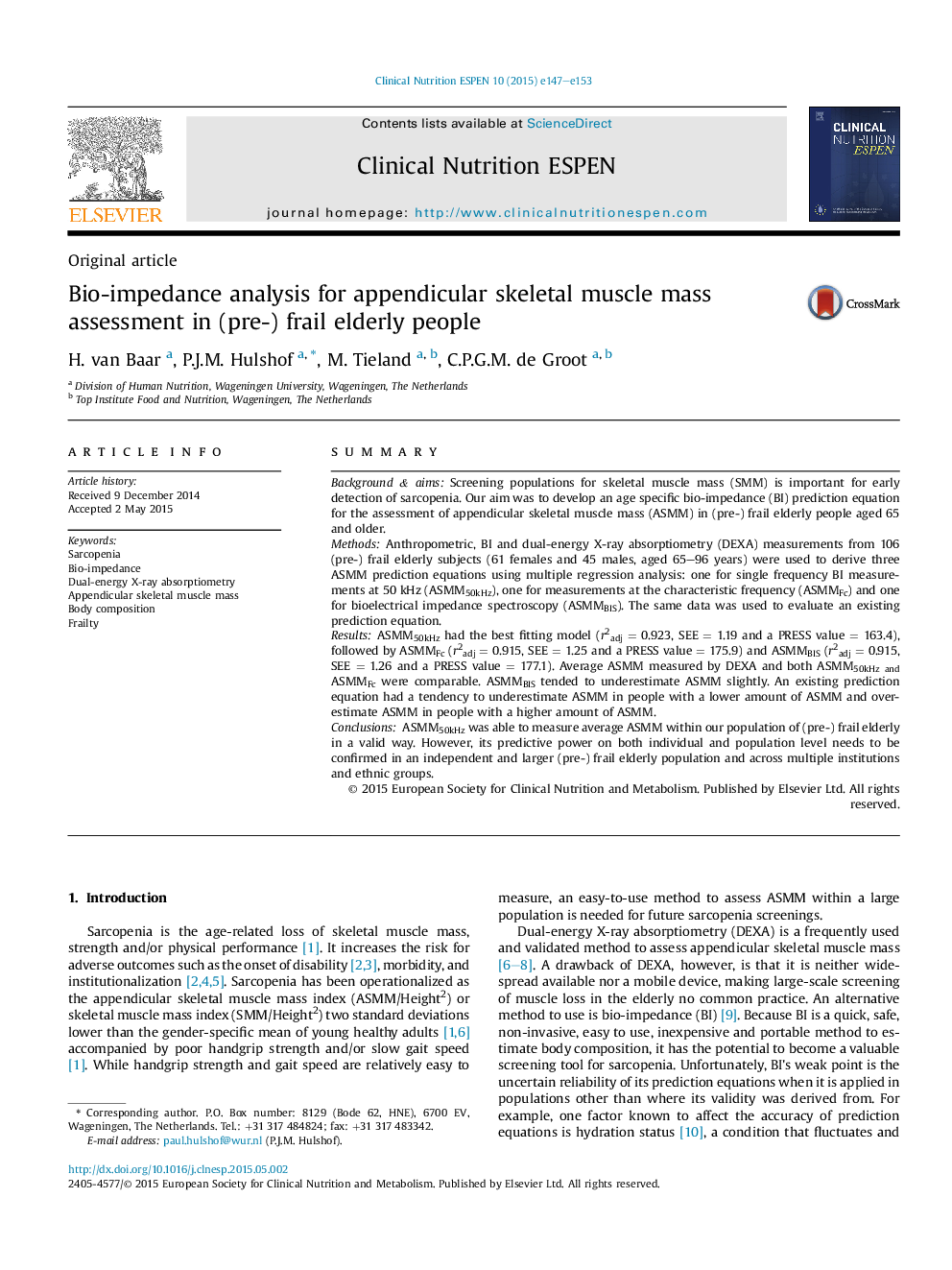| Article ID | Journal | Published Year | Pages | File Type |
|---|---|---|---|---|
| 2685059 | Clinical Nutrition ESPEN | 2015 | 7 Pages |
SummaryBackground & aimsScreening populations for skeletal muscle mass (SMM) is important for early detection of sarcopenia. Our aim was to develop an age specific bio-impedance (BI) prediction equation for the assessment of appendicular skeletal muscle mass (ASMM) in (pre-) frail elderly people aged 65 and older.MethodsAnthropometric, BI and dual-energy X-ray absorptiometry (DEXA) measurements from 106 (pre-) frail elderly subjects (61 females and 45 males, aged 65–96 years) were used to derive three ASMM prediction equations using multiple regression analysis: one for single frequency BI measurements at 50 kHz (ASMM50kHz), one for measurements at the characteristic frequency (ASMMFc) and one for bioelectrical impedance spectroscopy (ASMMBIS). The same data was used to evaluate an existing prediction equation.ResultsASMM50kHz had the best fitting model (r2adj = 0.923, SEE = 1.19 and a PRESS value = 163.4), followed by ASMMFc (r2adj = 0.915, SEE = 1.25 and a PRESS value = 175.9) and ASMMBIS (r2adj = 0.915, SEE = 1.26 and a PRESS value = 177.1). Average ASMM measured by DEXA and both ASMM50kHz and ASMMFc were comparable. ASMMBIS tended to underestimate ASMM slightly. An existing prediction equation had a tendency to underestimate ASMM in people with a lower amount of ASMM and overestimate ASMM in people with a higher amount of ASMM.ConclusionsASMM50kHz was able to measure average ASMM within our population of (pre-) frail elderly in a valid way. However, its predictive power on both individual and population level needs to be confirmed in an independent and larger (pre-) frail elderly population and across multiple institutions and ethnic groups.
